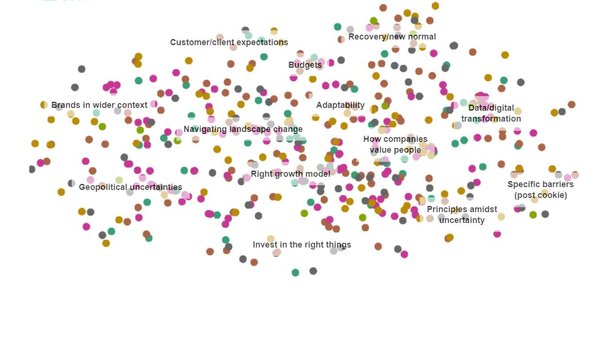Strategist’s Digest: How advertising media mixes really work /
Contagious digests the most interesting and relevant research from the world of advertising and beyond, because there’s just too much to read and too little time
James Swift
/
No Silver Bullet: Cross-Media Complementarity /
By J. Jason Bell, Felipe Thomaz, Andrew Stephen, Saïd Business School, University of Oxford. Published on the Social Science Research Network.
Give it to me in one sentence.
There is no single mix of media channels that will improve a campaign’s performance, but some are better than others at boosting specific outcomes.
Give me a little more detail.
Researchers at Oxford University’s Saïd Business School analysed how different combinations of media channels influence a campaign’s long-term brand results.
Kantar supplied the data, comprising 1,105 well-funded multimedia campaigns that took place between 2008 and 2019, and spanned 557 brands, 51 countries and 23 industries.
The researchers analysed 11 media channels (cinema, Facebook, magazines, newspapers, online display, online video, outdoor, point of sale, radio, television, YouTube) and measured their influence on six outcomes (salience, unaided awareness, aided awareness, association, consideration, and purchase intent).
To wrangle the data, the researchers used spectral clustering, which allowed them to analyse combinations of more than two media channels.
Some of the most noteworthy individual results were that newspaper-heavy campaigns excelled at improving brand salience among consumers, adding outdoor ads to a TV-and-Facebook mix greatly increased purchase intent, and while consideration was harder to predict, advertising a lot on YouTube looks like the surest route to boosting it.
Looking at the results as a whole, the researchers found no single combination of media channels that delivered on every metric, and in fact a scattershot approach (advertising on every channel except TV) proved the worst strategy, never once emerging as a top performer.
But the researchers did find that cinema – which was used in relatively few campaigns – lifted outcomes with a remarkable consistency. And the combination of TV and outdoor advertising outperformed the combination of TV and online display advertising on every outcome measured. The latter finding, the researchers assume, will come as a surprise to many in the industry, since only 12% of the campaigns they measured employed the former, more effective, mix.
Why is this interesting?
For a start, this paper is (well, it claims to be) the largest and broadest analysis of media effectiveness to date, and it is one of the few studies to measure combinations of more than two media channels.
It’s also a good argument that buying media based on GRP (gross rating points: a combination of reach and frequency) alone is an inadequate strategy.
If GRP were the be all and end all, then the combination of channels that provided the largest audience coverage would have outperformed all other mixes in this study. But it didn’t, because media appear to be functionally different, meaning that, for instance, exposure to a TV ad elicits a different response to a cinema ad.
Any weaknesses?
The study doesn’t measure sales, which doesn’t disprove anything but would have been nice. If there are any weaknesses, they will lie with the method, and frankly this author is not qualified to make that call, given the complexity of the techniques used.
Where can I find the whole report?
Here, and it’s free.
Want more of the same? /
We don’t just write about best-in-class campaigns, interviews and trends. Our Members also receive access to briefings, online training, webinars, live events and much more.






